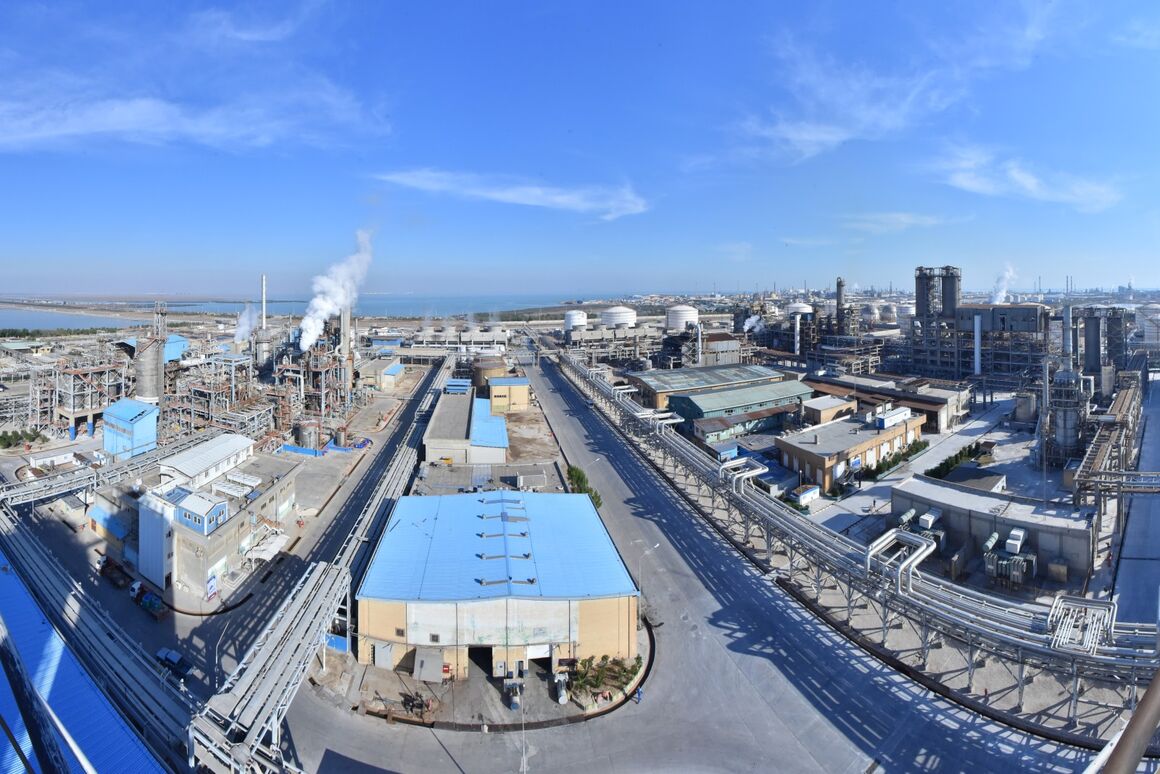Iran’s annual petrochemical production stands at 66 million tonnes now. Part of this production has been used to feed petrochemical plants and 31 million tonnes would be supplied on the market as final product. Of this 31 million tonnes, 22.5 million tonnes would be exported and the remaining 8.5 million tonnes would be sold on domestic markets to activate downstream industries.
Iran is currently earning a total of $17 billion from selling petrochemicals on domestic markets. That has given Iran the primary role in non-oil exports. Of this $17 billion, $12 billion is gained from exports and rest is due to domestic market sales.
The second planned jump in Iran’s petrochemical industry for qualitative and quantitative development of this industry will give rise to myriads of advantages for the downstream sector.
Iranian petrochemical industry planners intend to raise the petrochemical production capacity to 100 million tonnes from the current 66 million tonnes by 2021 which marks the end of Iran’s 6th Five-Year Economic Development Plan. Petrochemical revenue will go from $17 billion to $25 billion under the second jump.
Therefore, global scenes will become more open to Iran’s petrochemical products and the country would distance itself from selling raw materials.
Under conditions of sanctions, it would be much easier to export petrochemicals than crude oil, because of the diversity of petrochemicals and the wide spectrum of buyers. In other words, diversification of petrochemical products would expand export markets for Iran.
Diversity Overcomes Sale Restrictions
Assadollah Qarekhani, member of Majlis Energy Committee, told Iran Petroleum: “Diversification in the petrochemical products will enable us to make restrictions to sales ineffective, because it will provide customers with variety of more products.”
He added: “With such an approach, we will also earn the country higher value-added. That would help the country’s economy under economic restrictions. Meantime, diversifying the products would activate our small-scale petrochemical plants and create jobs for downstream industries and put an end to the stagnation caused by sanctions.”
Qarekhani said: “If we expand variety of our products, we can have commercial interaction with many countries and attract more customers.”
He said that the petrochemical industry does not face as much limitation as oil is faced in finding marketplaces, adding that a diversified petrochemical market would overcome sanctions.
Stronger Market Presence
Senior oil and petrochemical industry managers have felt the necessity of diversifying the petrochemical products. When there is a plan fed by ethane to produce ethylene it means that the radius of action has been limited, because only one or several products would be supplied. The market decides the fate of petrochemical products. If the same plant is fed by ethane, LPG and naphtha, more products would be supplied. For instance, in cold seasons, LPG prices increase significantly, but they drop in hot seasons.
At the same time, ethylene and downstream products are achieved from ethane. For example, propylene, butane and butadiene could be produced. That would give more room for maneuvering in feedstock, while more products would be achieved.
Iran’s Petroleum Ministry believes that the world is not always predictable and the presence of a variety of actors in the market and the concurrence of their actions and reactions may hinder the trade and economic balance or give it a new form. The existing balance in supply and demand always follows the performance of actors. If you are one of them you may not be influential, but you can secure your interests through concurrence of actions and reactions.
Undoubtedly, in case petrochemical products do not follow up on diversity in their products they will have no option but to follow the current trend and they will become inactive.
Another point hidden in the industrial literature of Iran’s petrochemical industry is that if we see large petrochemical plants are built in the world with diversity in feedstock and production, such plants are established in the heart of refineries.
Today, refining facilities built in the world can treat 1.5 mb/d of feedstock. A wide spectrum of petrochemicals will be also supplied. There are not many plants in the world to receive feedstock to supply product at the same time.
Saudi Aramco is one of the largest producers of liquefied petroleum gas in the world. Aramco has set up several PDH units to convert propane to propylene and downstream products. Such units may not be economical per se because propylene prices do not follow propane prices and propylene is produced by refining units. When at an industrial unit, the input and the output are not coordinated, it is as if no investment was made.
When Aramco has worked out such a mechanism it would become more influential in the market because it may create the necessary balance in the supply and demand at all seasons and affect the market. Aramco’s PDH units are tasked with removing fluctuations from the LPG market. Whenever the world markets are saturated with LPG, propane is delivered to such units and the rate of LPG supply is reduced so that prices would go up. If the propylene market is saturated, the relevant unit would be shut down or be overhauled. Aramco has pursued such a tactic to make profitable gains. Iran may follow similar approaches in its petrochemical industry.
Iran's Petroleum Ministry has adopted plans in order to connect the separate chains in the oil, refining and petrochemical industries. Even a group of petroleum industry managers have said a mechanism has to be worked out so that gasoline and propylene supply would go alongside each other.
Courtesy of Iran Petroleum
by
Farzin Savadkouhi


Your Comment